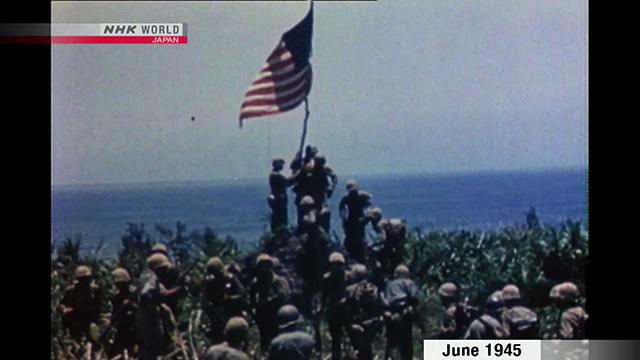After the battle, Okinawa served as a strategic base for the US military to attack the Japanese mainland. That fact -- Okinawa serving as a key foothold of the US military -- is unchanged even now.
The United States and its Allies launched the massive operation in March, 1945.
The Allies considered Okinawa a strategic point for invading Japan's main islands, in the last stages of World War Two.
"Okinawa is the crucial battle line. Our Kamikaze troops are striking the enemy," a news anchor said at the time.
Japan's military leaders ordered their troops to prolong the battle. They wanted to bide time before the US attacked mainland Japan.
Japanese officers pulled thousands of civilians into the fight, including women and teens. The deadly sweeps continued until the end of the battle.
The Japanese commanders in Okinawa ended the organized combat on June 23, 1945, and Japan surrendered 1.5 months after combat in Okinawa ended.
Japan signed a peace treaty with the Allied Countries and gained independence.
Japan also signed a security treaty with the US. It allows US forces to stay in Japan. Okinawa was separated from other parts of Japan and remained under US rule.
In the 1950s, anti-US military sentiment flared up in mainland Japan following the fatal shooting of a Japanese woman by a US soldier.
The US military decided to relocate its bases from the mainland to Okinawa.
The move succeeded in ridding people in mainland Japan of frustration with the US military, but forced the people of Okinawa to shoulder the burden.
"Today, Okinawa has returned to the mainland," Japanese Prime Minister Eisaku Sato announced in 1972.
Okinawa was returned from US rule and came under Japanese administration.
However, the US military, which has already built vast bases in the prefecture, did not leave. About 74 percent of all the US facilities in Japan are still concentrated on Okinawa.
